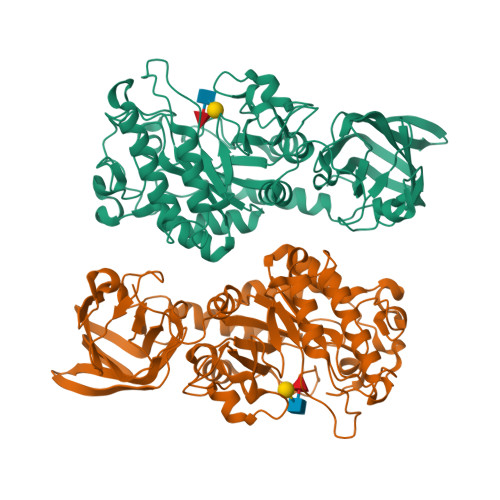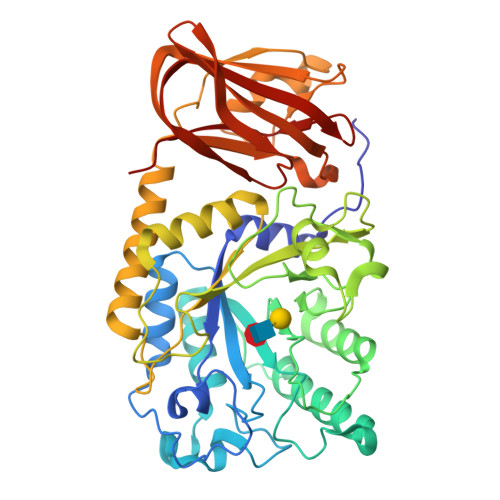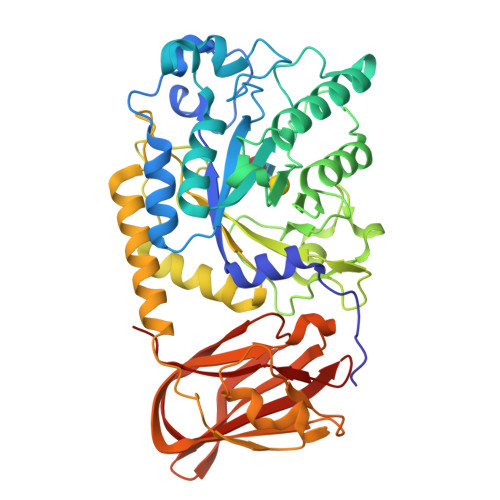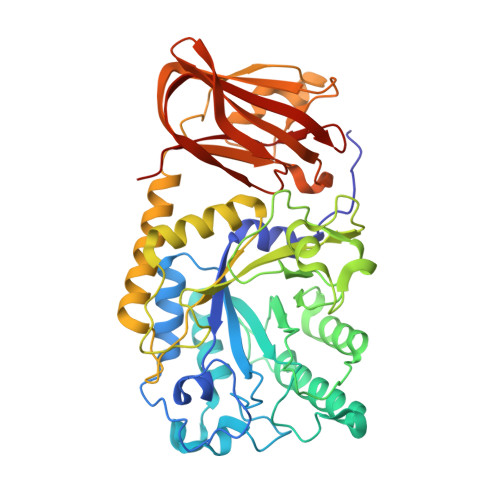Two complementary alpha-fucosidases fromStreptococcus pneumoniaepromote complete degradation of host-derived carbohydrate antigens.
Hobbs, J.K., Pluvinage, B., Robb, M., Smith, S.P., Boraston, A.B.(2019) J Biological Chem 294: 12670-12682
- PubMed: 31266803
- DOI: https://doi.org/10.1074/jbc.RA119.009368
- Primary Citation of Related Structures:
6OR4, 6ORF, 6ORG, 6ORH - PubMed Abstract:
An important aspect of the interaction between the opportunistic bacterial pathogen Streptococcus pneumoniae and its human host is its ability to harvest host glycans. The pneumococcus can degrade a variety of complex glycans, including N - and O -linked glycans, glycosaminoglycans, and carbohydrate antigens, an ability that is tightly linked to the virulence of S. pneumoniae Although S. pneumoniae is known to use a sophisticated enzyme machinery to attack the human glycome, how it copes with fucosylated glycans, which are primarily histo-blood group antigens, is largely unknown. Here, we identified two pneumococcal enzymes, Sp GH29 C and Sp GH95 C , that target α-(1→3/4) and α-(1→2) fucosidic linkages, respectively. X-ray crystallography studies combined with functional assays revealed that Sp GH29 C is specific for the Lewis A and Lewis X antigen motifs and that Sp GH95 C is specific for the H(O)-antigen motif. Together, these enzymes could defucosylate Lewis Y and Lewis B antigens in a complementary fashion. In vitro reconstruction of glycan degradation cascades disclosed that the individual or combined activities of these enzymes expose the underlying glycan structure, promoting the complete deconstruction of a glycan that would otherwise be resistant to pneumococcal enzymes. These experiments expand our understanding of the extensive capacity of S. pneumoniae to process host glycans and the likely roles of α-fucosidases in this. Overall, given the importance of enzymes that initiate glycan breakdown in pneumococcal virulence, such as the neuraminidase NanA and the mannosidase Sp GH92, we anticipate that the α-fucosidases identified here will be important factors in developing more refined models of the S. pneumoniae -host interaction.
Organizational Affiliation:
Department of Biochemistry and Microbiology, University of Victoria, Victoria, British Columbia V8P 5C2, Canada.





















